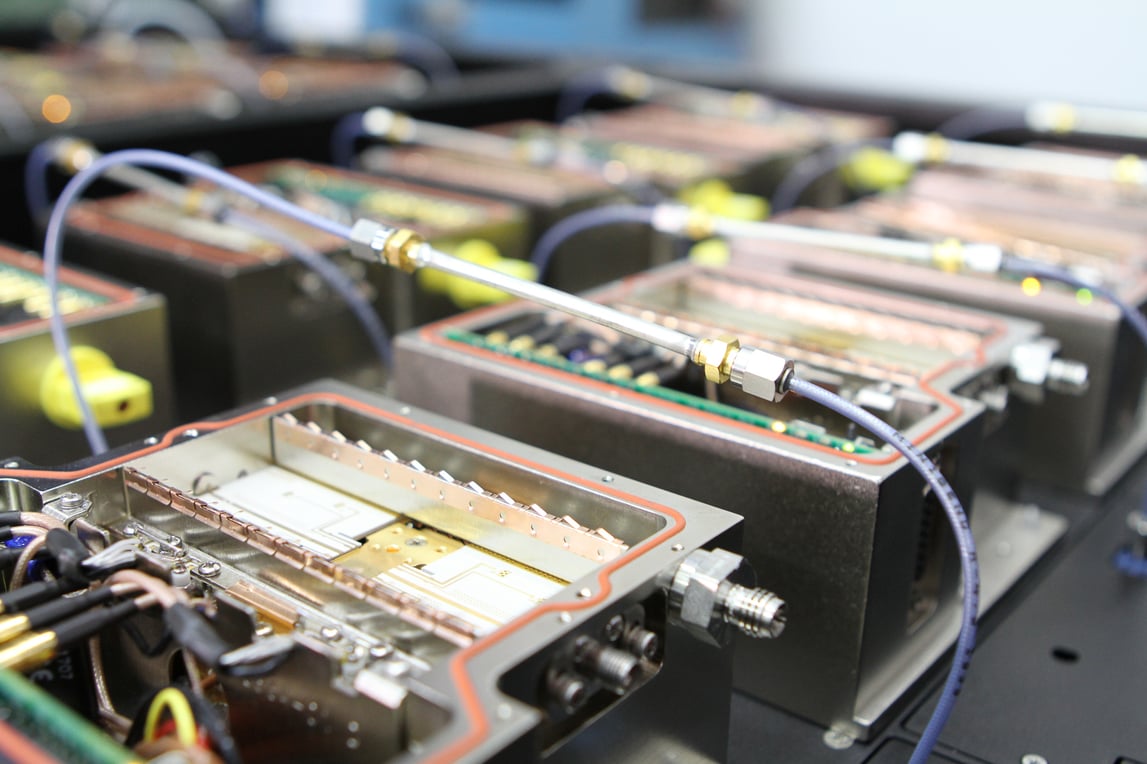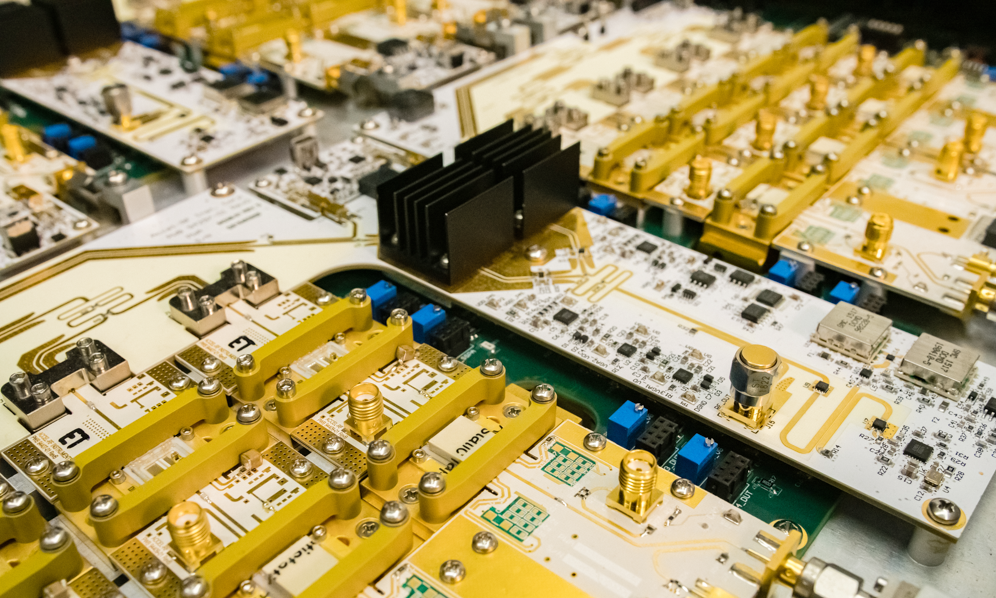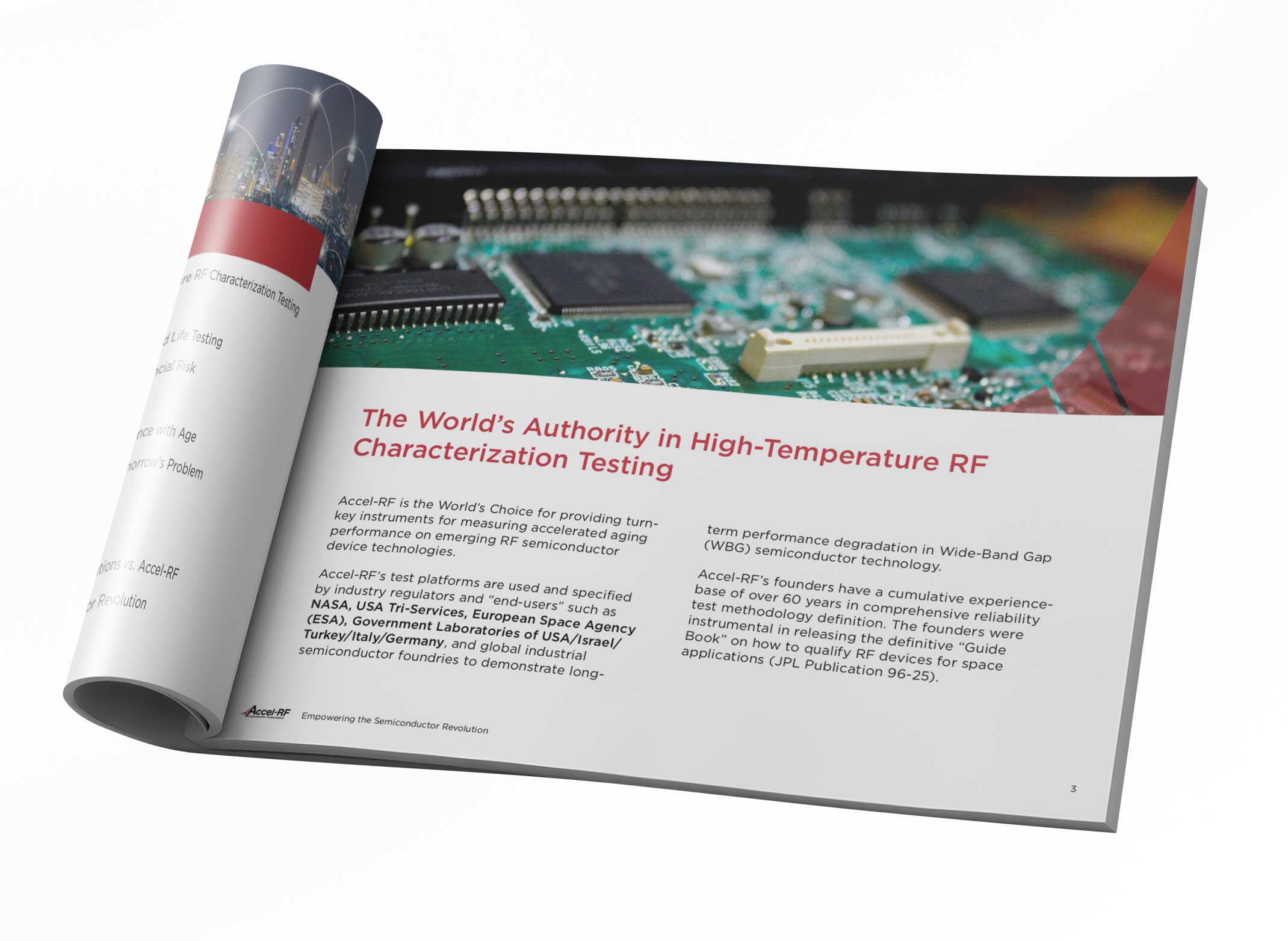New entrants into the world of electronic device reliability testing may wonder about the difference between two similar tests: RF-Accelerated Life Test (RF-ALT) and High-Temperature RF Burn-in. The tests share many common characteristics; however, their functions are fundamentally different.
Understanding the purpose of each test and when one is more appropriate than the other is a crucial component in developing an effective reliability testing program. Here is a brief rundown of what each test consists of and the benefits each confers.
RF-ALT and RF-Burn-In Testing Similarities

RF-ALT and RF-Burn-In are two test methods that demonstrate the quality and reliability assurance (QRA) for today's RF devices. These tests may yield predictive reliability figures-of-merit (FOM) performance to potential markets and specific customers. Both test methods, when used for RF devices in transmitters or high-power level applications, are usually performed under RF drive conditions at nominal drain operating voltage (i.e., 28 V, 40 V, or 50 V) and high RF compression levels, which are typical conditions for many target applications.
Both tests typically bias devices at a quiescent current and then a constant RF input power is applied. The result is an output power of about 10 to 50 times the RF input power level. Each device fixture has a heat source that actively controls the temperature in real-time throughout the test. The applied heat maintains a constant temperature relative to some point on the device or device package.
Have questions about the future of 5G and how it will affect you?
Understanding the Difference Between ALT and Burn-In
The contrasts between RF-ALT and RF Burn-In are subtle yet significant. The differences center on the capabilities of the testing systems and the anticipated information that each test gathers.
- RF-ALT discerns a device's intrinsic failure mechanisms. It runs until parametric failure, catastrophic failure or a predefined condition occurs.
- RF Burn-In tests reveal an unacceptable parametric variation due to extrinsic or intrinsic mechanisms shifting due to thermal, electrical or RF stress. RF Burn-In typically runs for 96 up to 1000 hours without interruption. The test concludes with a comprehensive suite of DC and RF device parameter checks at room temperature. Since the devices do not receive stresses sufficient to cause failures to occur, manufacturers can ship them to the customer after testing is complete.
Accel-RF customers have purchased RF systems for performing both intrinsic reliability measurements (RF-ALT) and extrinsic qualification assurance measurements (RF Burn-In).
Each Testing Method's Differing Capabilities
From a capability standpoint, the two systems differ in several aspects. Below are the unique characteristics of Accel-RF’s RF-ALT systems, followed by those for RF Burn-In systems.
RF-ALT systems:
- Can achieve 300C baseplate temperatures. This capability allows the device under test (DUT) to achieve channel temperatures over 400C, which is the range for accelerating failure and parametric degradation to occur within an acceptable time frame (3-4 months).
- Hold the channel temperature constant with varying DC and RF parametric changes during a long duration ALT. This property is significant since the location of the failure is in the channel area of the device. Without this capability, the channel temperature, used as the acceleration determination parameter for calculating the activation energy of the failure mechanism, would vary wildly during the test as power dissipation changes. Channel temperature varies drastically with DC and RF degradation in GaN and other wide bandgap materials, due to their high-power density.
- Have additional parametric instruments embedded in the unit used to perform swept dynamic measurements for both DC and RF parameters. These readings allow engineers to extract crucial degradation data based on established device FOM. Properties such as transconductance, drain-to-source resistance and RF power output slump set performance against industry standards.
- Feature a much larger footprint to device-channel ratio than RF Burn-In systems due to the precision of stimulus and measurement requirements. RF-ALT equipment also has fewer channels per-square-foot of floor space than an RF Burn-In system.
- Can be integrated with independent synchronous pulsed DC and RF capability due to the individual DUT stimulus and control architecture of the design.
RF Burn-In systems:
- Can measure the application-specific device or a representative product sample. Obtaining this measurement requires RF Burn-In systems to handle device power levels for both DC and RF that may be significantly higher than the DUT used in the intrinsic reliability RF-ALT. The higher power levels may require the use of a liquid-cooling system to maintain safe operation.
- Feature a maximum baseplate temperature of 175C to 200C (compared to 300C on RF-ALT systems). The testing uses lower channel temperatures and runs for less time than the RF-ALT to preserve the functionality of the DUT.
- Are not integrated with other stand-alone equipment for extrapolation of dynamic parametric as in the RF-ALT. RF Burn-In monitors parameters and compares results to statistical data compiled for acceptable ranges within a chip “family.” The test weeds out devices that deviate too much from the established norm.
- Are used for process control monitoring and product qualification assurance. Since the DUTs get shipped to customers, the amount of channel capacity, test flow capacity and relative speed of fault detection are top concerns.
- Are usually not synchronous-pulsed capable test systems unless the specific application requires it. Adding synchronous pulsing complicates the system exponentially as the number of channels increases.
Accel-RF: Reliability Assurance Testing Solutions
The two types of tests, RF-ALT and RF Burn-In, serve different purposes in the IC manufacturing process. RF-ALT characterizes the device and helps designers improve the chip's functionality and the factory's ability to reproduce the device reliably in mass production. RF Burn-In comes into play once the ICs go into mass production. Manufacturers use RF Burn-In to make sure devices meet the set standards to cull out any products that do not perform as expected before they reach the field.
Accel-RF's test systems help manufacturers meet both requirements. The test solutions are entirely configurable and allow the user to add the needed RF modules to a standard base system that provides the DC bias and temperature control. The ability to configure systems to meet needs combined with robust parametric-gathering software sets Accel-RF apart from other testing unit providers. Flexibility means a higher return on investment, which translates to more profitability and a better chance for success in the highly competitive semiconductor market.




